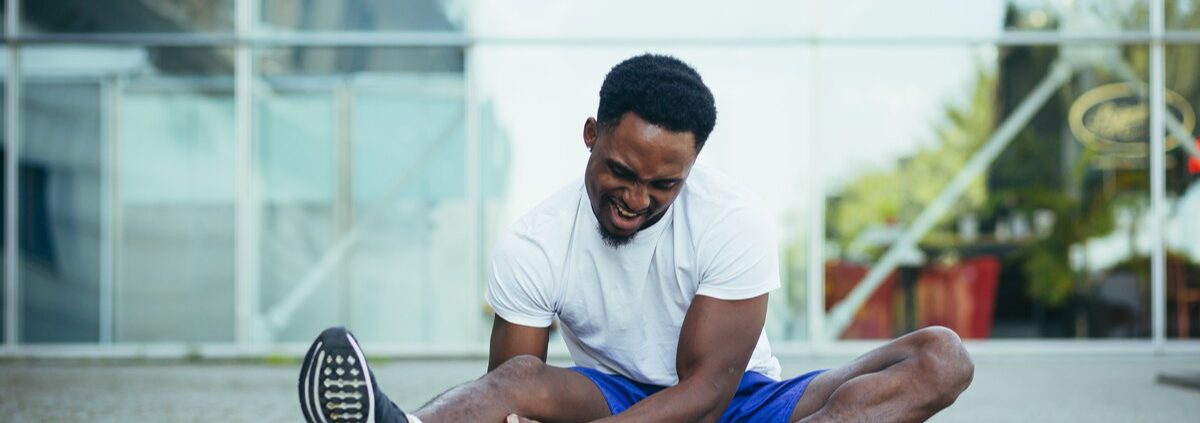What’s Causing My Knee Pain?
By Michael W. Smith, MD, WebMD
Being active is one of the best things you can do for your joints and the rest of your body. But injuries can happen, and they often involve the knees.
Some of the most common problems are sprained ligaments, meniscus tears, tendinitis, and runner’s knee. If you have an old knee injury that wasn’t properly treated, it may flare up now and then or hurt all the time.
What Else Can Cause Knee Pain?
- Bursitis. A bursa is a sac that holds a small amount of fluid that’s under the skin above your joint. It helps prevent friction when the joint moves. Overuse, falls, or repeated bending and kneeling can irritate the bursa on top of your kneecap. That leads to pain and swelling. Doctors call this prepatellar bursitis. You may also hear it called ”preacher’s knee.”
- Dislocated kneecap. This means that your kneecap slides out of position, causing knee pain and swelling. Your doctor may call this “patellar dislocation.”
- IT (iliotibial) band syndrome. The iliotibial (IT) band is a piece of tough tissue that runs from your hip down to the outer part of your knee. When you overdo activity, it can become inflamed over time. That causes pain on the outer side of the knee. It’s common among runners when going downhill.
- Meniscal tear. Sometimes, a knee injury can cause cartilage to rip. These rough edges can get stuck in the joint, which causes pain and swelling. Many times, people will have the sensation of “catching” in the joint when they are active.
- Osgood-Schlatter disease. This condition happens when you’re young, when bones and other parts of the knee are still changing. It can cause a painful bump below the knee, where a tendon from the kneecap connects to the shin. Overdoing exercise, and irritation at a point on the bottom of your knee called the tibial tubercle, often make this area hurt. The ache may come and go over time. It’s especially common in teenage boys and girls.
- Osteoarthritis. This is the “wear and tear” type of arthritis. It’s a top cause of knee pain after age 50. This condition causes the knee joint to ache or swell when you’re active. Joints affected by osteoarthritis can also be stiff early in the day.
- Patellar tendinitis. This means you have inflammation in the tendon that connects the kneecap to the shinbone. Tendons are tough bands of tissue that connect muscles to your bones. When you overdo exercise, they can become inflamed and sore. You may also hear it called “jumper’s knee” because repetitive jumping is the most common cause.
- Patellofemoral pain syndrome. Muscle imbalance, tightness, and alignment problems of the legs usually cause this condition. It causes knee pain and occasional “buckling,” meaning your knee suddenly can’t bear your weight. It’s not due to an injury. It’s more common for women than for men.
- The knee or leg bones look deformed.
- The person can’t put weight on the leg.
- The pain is extreme.
- There is immediate swelling, tingling, or numbness below the knee.
What Does a Knee Injury Feel Like?
Obviously, it hurts! But the type of pain and where you feel it can vary, depending on what the problem is. You may have:
- Pain, usually when you bend or straighten the knee (including when you go down stairs)
- Swelling
- Trouble putting weight on the knee
- Problems moving your knee
- Knee buckling or “locking”
If you have these symptoms, see your doctor. They will check your knee. You may also need X-rays or an MRI to see more detail of the joint.
What Can You Do for the Pain?
Your plan will depend on your specific injury. Mild to moderate issues will often get better on their own. To speed the healing, you can:
- Rest your knee. Take a few days off from intense activity.
- Ice it to curb pain and swelling. Do it for 15 to 20 minutes every 3 to 4 hours. Keep doing it for 2 to 3 days or until the pain is gone.
- Compress your knee. Use an elastic bandage, straps, or sleeves to wrap the joint. It will keep down swelling or add support.
- Elevate your knee with a pillow under your heel when you’re sitting or lying down to cut down on swelling.
- Take anti-inflammatorymedications. Nonsteroidal anti-inflammatory drugs (NSAIDs) such as ibuprofen or naproxen will help with pain and swelling. Follow the instructions on the label. These drugs can have side effects, so you should only use them now and then unless your doctor says otherwise.
- Practice stretching and strengthening exercises if your doctor recommends them. You may want to do physical therapy, too.
Some people with knee pain need more help. For instance, if you have bursitis, your doctor may need to draw out extra fluid from the bursa in your knee. If you have arthritis, you may need an occasional corticosteroid shot to settle down inflammation. And if you have a torn ligament or certain knee injuries, you may need surgery.
When Will My Knee Feel Better?
The recovery time depends on your injury. Also, some people naturally heal faster than others.
While you get better, ask your doctor if you can do an activity that won’t aggravate your knee pain. For instance, runners could try swimming or other types of lower-impact cardio.
Whatever you do, don’t rush things. Don’t try to return to your regular level of physical activity until you notice these signs:
- You feel no pain in your knee when you bend or straighten it.
- You feel no pain in your knee when you walk, jog, sprint, or jump.
- Your injured knee feels as strong as the other knee.
How Can I Prevent Knee Pain?
Although you can’t prevent all injuries, you can take these steps to make them less likely.
- Stop exercising if you feel pain in your knee.
- If you want to make your workout more intense, always do it gradually.
- Stretch your legs before and after physical activity.
- Use kneepads to prevent bursitis, especially if you have to kneel a lot.
- Wear shoes that fit well and offer enough support.
- Keep your thigh muscles strong with regular stretching and strengthening.
- If you’re overweight, work to drop some pounds so there’s less stress on all of your joints, including your knees.












Leave a Reply
Want to join the discussion?Feel free to contribute!